Aster: [Cultivation, Irrigation, Care, Pests and Diseases]
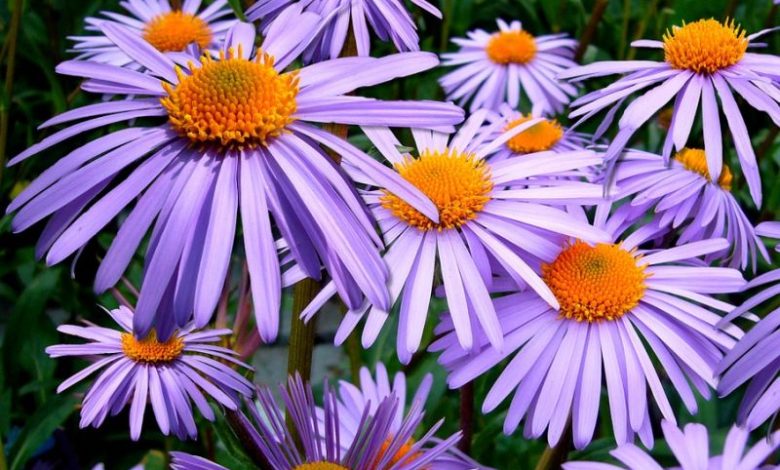
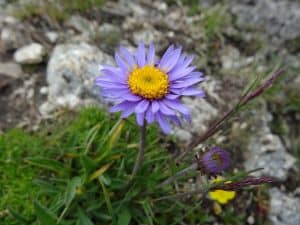 Aster is a genus of flowering plants in the family Asteraceae. There are thousands of species around the world. Among the most popular are: A. alpinus, A. pyrenaeus, A. squamatus, A. tripolium, among others.
Aster is a genus of flowering plants in the family Asteraceae. There are thousands of species around the world. Among the most popular are: A. alpinus, A. pyrenaeus, A. squamatus, A. tripolium, among others.
One of the most popular species is the Aster alpinus, native to the European Alps and the Spanish Pyrenees. It is currently considered one of the most beautiful daisies in the Pyrenees.
The also called shepherd’s chamomile, is characterized by being rustic, resistant, fast growing, as well as having very showy flowers similar to daisies.
Important points when sowing asters
- Scientific name: Aster Alpinus.
- Common Name: Aster, Shepherd’s chamomile, Alpine blue daisy, Alpine star.
- Height: 25 centimeters.
- Light Need: Sun.
- Temperature: Cold and temperate climates (15ºC to 17ºC).
- Irrigation: Low.
- Fertilizer: Organic fertilizer.
What characteristics does the aster have?
The alpine aster is a medium-sized, herbaceous, perennial plant that reaches 20 to 30 centimeters in height. It is anchored to the ground by means of short, branched and horizontal roots.
Its stems are erect and simple, without branching. It has a foliage composed of basal and cauline leaves of a dark green color. The basal leaves are spatulate blades, with tector hairs; stems tend to be longer and narrower.

The alpine aster flower is a capitulum, that is, an inflorescence that widens to form a yellow receptacle, surrounded by long bracts. It reaches 3 to 5 centimeters wide and has a violet blue color.
Asters bloom variably in the summer, during the months of June through October. In addition, its fruits in the form of achenes ripen at the beginning of autumn, during the month of August.
When to sow asters?
It is recommended to sow by seed during the fall. If you want to sow by division or cold frame, it is advisable to do it during spring, when temperatures are not below 10ºC or 8ºC.
Where to plant asters?
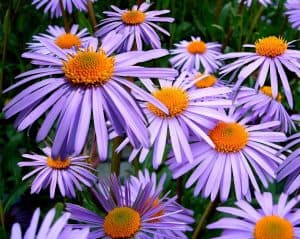 One of the fundamental aspects to cultivate the aster plant is to place it in an area where it receives direct sunlight throughout the day, or at least for a period of 3 hours.
One of the fundamental aspects to cultivate the aster plant is to place it in an area where it receives direct sunlight throughout the day, or at least for a period of 3 hours.
In areas with hotter, drier climates, plant it in partial shade to provide protection and prevent dehydration or sunburn.
On the other hand, asters are resistant to frost. In fact, it can tolerate low temperatures without any problem, with a limit of -28 ºC. However, it needs at least 3 months in warm temperatures for it to reproduce properly.
How to prepare the land?
The alpine aster adapts easily to any type of soil, but it reproduces better in poor or medium nutrient content soils. They must also be moderately moist, decompacted, drained, and with a pH between 6 and 7.5.

Similarly, it can be planted in clay or loamy soils, but its growth will be much slower. In these conditions, sand, tepojal or perlite can be added, favoring the drainage capacity of the substrate.

Regarding fertilization, this is not necessary. However, slow-release fertilizers can sometimes be applied during pre-planting if the soil requires it.
How do we water the asters?
The alpine aster plant does not demand a high water consumption. In fact, it does not tolerate excess water or flooding. We must water what is necessary to give the substrate the necessary moisture to develop, especially during the growth period and when the soil is half dry.
It is also important to water only the root area and not the foliage, unless specified by the seed or grower.
How often do we water the asters?
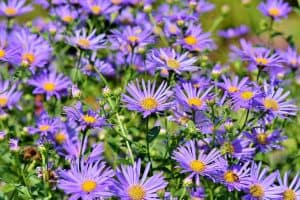 It should be watered frequently but in small quantities, about 2 or 3 times a week, taking more care during hot or dry seasons.
It should be watered frequently but in small quantities, about 2 or 3 times a week, taking more care during hot or dry seasons.
It is recommended that irrigation be reduced or suspended during the other months of the year, as these are periods when the plant rests and does not need as many nutrients to survive.
How to sow an aster step by step?
The alpine aster plant can be grown through seeds and vegetative methods. The steps to follow in each case are shared below.
by seeds
In some cases, alpine aster seeds need to go through the cold stratification process. To do this, you can put the seeds in a bag with moist peat, refrigerate them at 5ºC for 4 to 6 weeks and follow the steps indicated.
- Place the aster seeds in a container and cover them finely with vermiculite or universal substrate, at a temperature of 18ºC to 21ºC.
- Carry out frequent and gentle watering with a spray bottle for 2 or 4 weeks to maintain the humidity of the substrate.
- Wait until the seedlings have a couple of true leaves and transplant them after the last frost.
by division
- Pull out a mature aster bush and, using a sharp, sterilized tool, carefully divide the root system along with stems and leaves.
- Sow the various sections, in the ground or in pots.
by cuttings
- From a mature plant, take a stem with new leaves and cut a section 6 to 8 inches long.
- Submerge the base side in a liquid with rooting hormones and place it in a pot with moistened universal substrate to a depth of 5 centimeters.
- Wait a couple of weeks for the roots to start growing.
- As soon as the cutting begins to show signs of growth, transplant it into the ground.
What care does the aster need?
The alpine aster does not require special care. However, it is possible to remove wilted flowers, leaves or stems before September, so as not to accelerate the growth of shoots.

On the other hand, to promote healthy growth, plants should be divided every 3 to 4 years. In this way, the plants will grow stronger.
What pests and diseases affect asters?
Alpine asters can be attacked by powdery mildew, Botrytis fungus, whitefly, thrips, snails and aphids. In the case of diseases, it can be affected by wilts, leaf spots and gray mold.
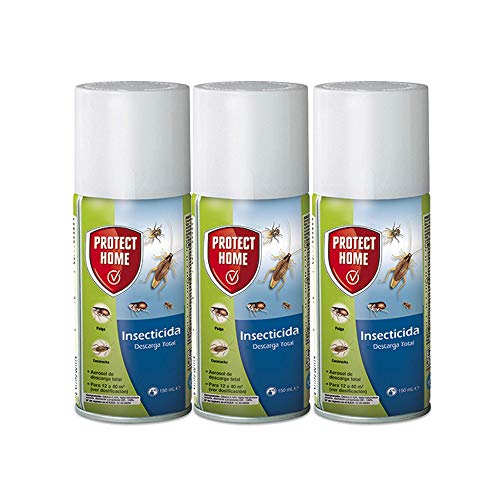
verticillium wilt
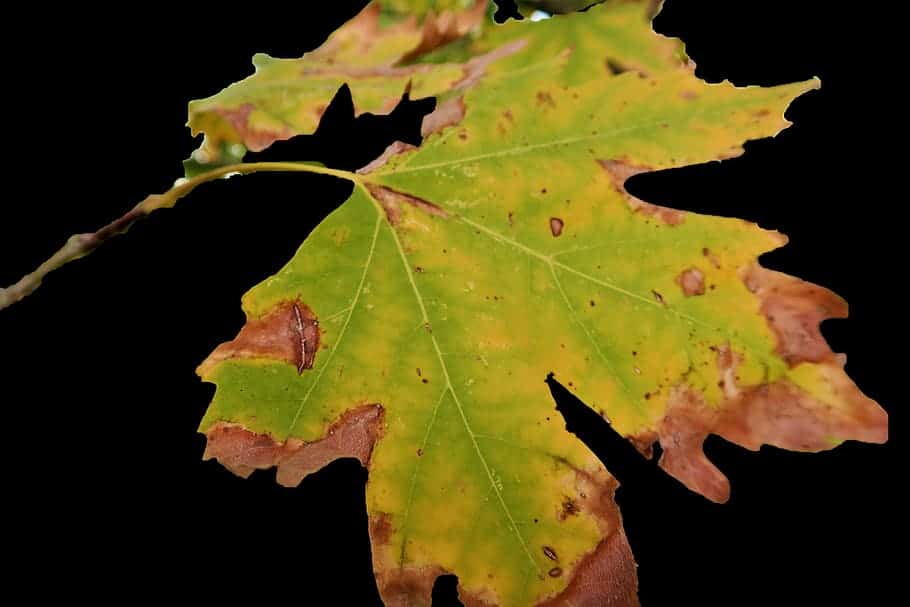 Verticillium or Verticillium wilt is a common soil fungus that thrives in temperate climates around the world and can be present in the soil for decades.
Verticillium or Verticillium wilt is a common soil fungus that thrives in temperate climates around the world and can be present in the soil for decades.
Verticillium wilt overwinters in the soil as dormant mycelium or tiny dormant black structures called microsclerotia, waiting for favorable conditions to return.
They enter damaged plant tissue through the roots and multiply. Many common weeds, such as dandelions and weeds, can be Verticillium host species.
Verticillium wilt is a disease that affects more than 350 species of eudicolous plants. It is caused by six species of Verticillium fungi: Verticillium dahliae, Verticillium albo-atrum, Verticillium longisporum, Verticillium nubilum, Verticillium theobromae, and Verticillium tricorpus.
Many plants with significant economic weight are susceptible, such as cotton, tomatoes, potatoes, oilseed rape, aubergines, peppers, and ornamental plants, as well as others in natural vegetation communities.
Many species and cultivars of eudicots are resistant to the disease, and all monocots, gymnosperms, and ferns are immune. To know more: Verticillium wilt in the Orchard: What is it? How do we identify it?
References
- http://www.michelena.eus/pdfs/monogs/monograficas_18.pdf
- https://www.asturnatura.com/species/aster-alpinus.html
- https://www.jardineriaon.com/aster.html
- https://gardenerspath.com/plants/flowers/alpine-aster/
- https://www.almanac.com/plant/asters
- https://www.mygardenlife.com/plant-library/1285/aster/alpinus
- https://www.jelitto.com/Seed/Perennials/ASTER+alpinus+Portion+s.html
- https://en.wikipedia.org/wiki/Aster_alpinus
- https://www.ecured.cu/Aster

![Photo of Tajinaste Rojo: [Characteristics, Habitat, Reproduction and Uses]](https://www.complete-gardening.com/wp-content/uploads/2022/08/tajinaste-rojo-characteristics-habitat-reproduction-and-uses-390x220.jpg)
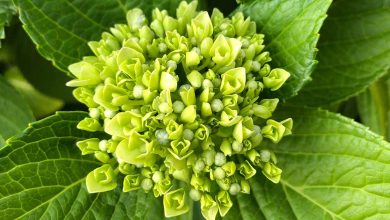
![Photo of Boletus Edulis: [Characteristics, Cultivation, Harvesting]](https://www.complete-gardening.com/wp-content/uploads/2022/08/boletus-edulis-characteristics-cultivation-harvesting-390x220.jpg)
![Photo of 7 Pests that Affect your Orange Trees: [Detection, Causes and Solutions]](https://www.complete-gardening.com/wp-content/uploads/2022/08/7-pests-that-affect-your-orange-trees-detection-causes-and-solutions-390x220.jpg)